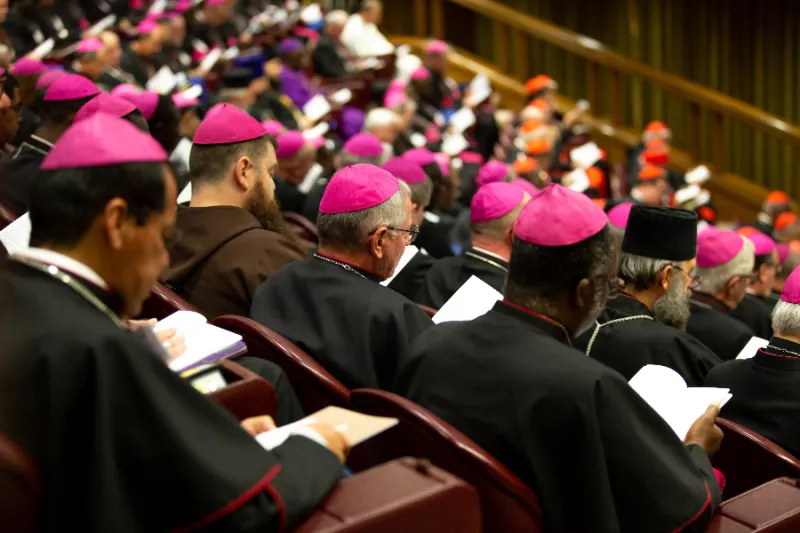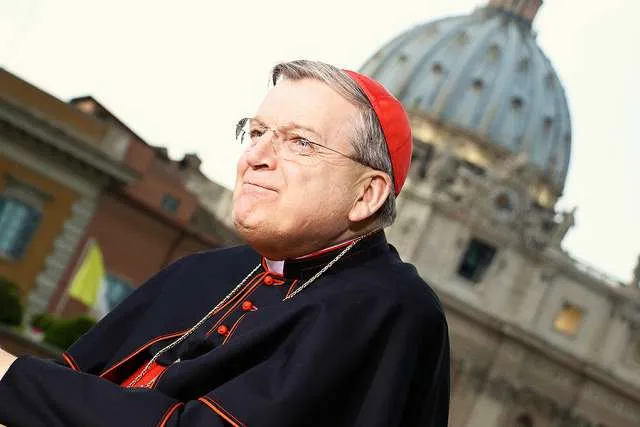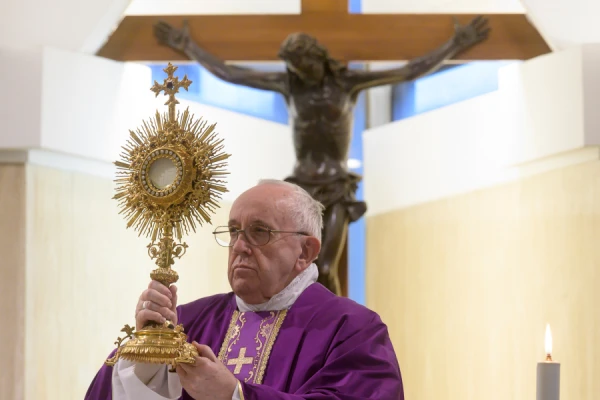
Vatican City, Jan 19, 2022 / 10:15 am (CNA).
A website overseen by the General Secretariat of the Synod of Bishops at the Vatican has linked to a group campaigning for women’s ordination.
In a post dated Jan. 15, the Synodresources.org website shared information about the Women’s Ordination Conference organization, based in Washington, D.C.
Thierry Bonaventura, communication manager of the General Secretariat of the Synod of Bishops, told CNA on Jan. 19 that the website was not promoting the group.
“I would rather speak of ‘sharing,’ as the title of the website,” he said.
Bonaventura pointed out that the “About” section of Synodresources.org emphasizes that the website is “a tool for listening and a platform for sharing that does not replace the official website of Synod 2021-2023 (synod.va).”
“Rather than vertical, top-down communication, it aims to be horizontal communication,” it says.
The website was previously at the center of controversy after it linked to an LGBT outreach ministry.
Officials at the General Secretariat of the Synod of Bishops removed the link to New Ways Ministry after they became aware that the U.S. bishops’ conference expressed its disapproval of the organization in 2010.
But following an outcry, they restored the link and issued an apology.
Synodresources.org also links to the Latin-American Rainbow Catholic community, part of the Global Network of Rainbow Catholics, which says that it “brings together groups and their members who work for pastoral care and justice for lesbian, gay, bisexual, transgender and intersex (LGBTI) people and their families.”
The Women’s Ordination Conference, founded in 1975, describes itself as “the oldest and largest organization working to ordain women as deacons, priests, and bishops.”
In his 1994 apostolic letter Ordinatio sacerdotalis, Pope John Paul II wrote that “the Church has no authority whatsoever to confer priestly ordination on women and that this judgment is to be definitively held by all the Church’s faithful.”
During an in-flight press conference in 2016, Pope Francis was asked whether there were likely to be women priests in the Catholic Church in the next few decades.
“As for the ordination of women in the Catholic Church, the last clear word was given by St. John Paul II, and this holds,” he replied.
The pope has asked two commissions to study the question of a female diaconate in the Catholic Church.
The first, established in 2016, examined the historic issue of the role of deaconesses in the early Church but did not reach a consensus.
He instituted a second commission in 2020, following discussion of the female diaconate during the 2019 Amazon synod.
Pope Francis changed Church law in January 2021 so that women can be formally instituted to the lay ministries of lector and acolyte.
The General Secretariat of the Synod of Bishops, a permanent institution based at the Vatican and dedicated to serving the Synod, is currently overseeing what has been called one of the largest consultation exercises in human history, ahead of the 2023 Synod on Synodality.
A vademecum, or handbook, released in September 2021 urged dioceses to include “all the baptized” in the process, including those on the margins of Church life.
It said: “Special care should be taken to involve those persons who may risk being excluded: women, the handicapped, refugees, migrants, the elderly, people who live in poverty, Catholics who rarely or never practice their faith, etc.”
A disclaimer on the homepage of Synodresources.org says: “The publication of any contribution should not be understood as an endorsement of its content; nor should anyone interpret such a publication as an act of formal recognition by the General Secretariat of the Synod of Bishops of the group or community submitting the contribution.”
A pop-up window explains that anyone can send material to the site, but not all contributions will be accepted.
It says: “The current synodal process is addressed to the entire People of God, to all the baptized. In chapter 2.1 of the Vademecum, we urged dioceses to involve people at risk of exclusion (women, migrants, the elderly or Catholics who rarely or never practice their faith).”
“At the same time, in order to participate fully in the act of discernment, it is important for the baptized to listen to the voices of other people in their local context, including those who have abandoned the practice of the faith, people from other faith traditions, people who have no religious beliefs at all.”
“Therefore, anyone is entitled to send material. At the same time, because we firmly believe that the experience of faith is and must be communitarian, we will only accept contributions that express the views of a group clearly identified. We regret that individual submissions will not be considered.”
The Vatican announced in May 2021 that the Synod on Synodality would open with a diocesan phase starting in October that year.
A second, continental phase will take place from September 2022 to March 2023.
The third, universal phase will begin with the XVI Ordinary General Assembly of the Synod of Bishops, dedicated to the theme “For a Synodal Church: Communion, Participation, and Mission,” at the Vatican in October 2023.
If you value the news and views Catholic World Report provides, please consider donating to support our efforts. Your contribution will help us continue to make CWR available to all readers worldwide for free, without a subscription. Thank you for your generosity!
Click here for more information on donating to CWR. Click here to sign up for our newsletter.






Said the spokesthing for the General Secretariat: “I would rather speak of ‘sharing,’ as the title of the website.” There, you see! It’s all about semantics and pronunciation; what he actually said was “shilling.”
As for female ordinations, in his “Salt of the Earth” (Ignatius, 1997, p. 210) Cardinal Ratzinger (remember him?) cited a German feminist ex-nun (Elisabeth Schussler) who remarked that the endgame was not really female ordination, but the end of all sub-ordination, that is, the extinction of ordination altogether (to be replaced by musical-chairs “leadership,” now the obvious goal of the German “synodal way”).
As for the Study Commission on nose-in-the-tent ordination of women deacons, In May 2019, Francis said the (contrived and then predictably divided) commission had not yet produced a “definitive response” due to a lack of consensus regarding the role of deaconesses in early Christianity. Literate members on the commission must have discovered the same historical points already ably examined by Gerhard Muller in his “Priesthood and Diaconate” Ignatius, 2000)—available to even the captive audience laity.
So, for the tattered “field hospital Church” (aka “synodality,” aka block party), the usual practice following a field-hospital amputation is to discard the gangrene while retaining the living body parts—namely the living tradition of the Mystical Body of Christ.
The circus-tent sideshow be damned. When the leaders won’t lead, someone else will…